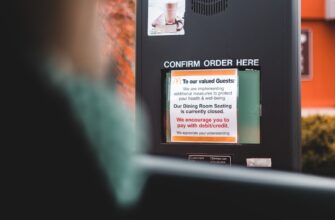- Why Your Digital Life Needs Password Encryption
- Top 4 Low-Cost Encryption Methods for Everyday Users
- Step-by-Step: Encrypt Accounts with VeraCrypt (Free)
- Maximizing Security on a Budget: Essential Practices
- FAQ: Low-Cost Password Encryption Explained
- Is free encryption software truly secure?
- Can I encrypt accounts on mobile devices cheaply?
- How often should I change encrypted passwords?
- Does encryption slow down my device?
- Are there hidden costs in ‘free’ encryption tools?
- Can encrypted accounts be recovered if I forget the password?
- Final Thoughts: Security Within Reach
Why Your Digital Life Needs Password Encryption
In today’s hyper-connected world, your online accounts are treasure troves of personal data. Password encryption transforms your sensitive information into unreadable code that only your unique key (password) can unlock. Without it, hackers can easily intercept login credentials during data breaches or phishing attacks. The best part? Implementing robust encryption doesn’t require deep pockets – numerous low-cost solutions exist to shield your emails, financial accounts, and private documents from prying eyes.
Top 4 Low-Cost Encryption Methods for Everyday Users
- Built-in Operating System Tools: Windows BitLocker and macOS FileVault offer free full-disk encryption. Simply enable them in system settings to protect your entire device.
- Open-Source Software: VeraCrypt (free) creates encrypted virtual disks for files and folders. Cross-platform support makes it ideal for multi-device users.
- Password Managers with Encryption: Bitwarden (free tier) and KeePass (free) encrypt password databases using AES-256 encryption – the same standard governments use.
- Encrypted Cloud Storage: Sync.com and Tresorit offer affordable plans with end-to-end encryption, securing files before they leave your device.
Step-by-Step: Encrypt Accounts with VeraCrypt (Free)
- Download VeraCrypt from its official website and install
- Launch the application and click ‘Create Volume’
- Select ‘Encrypt a file container’ and choose storage location
- Set encryption algorithm (AES is recommended)
- Specify container size based on your needs
- Create a strong 12+ character password with symbols, numbers, and mixed case
- Mount the container and move sensitive files into it
- Dismount when done – files remain encrypted at rest
Maximizing Security on a Budget: Essential Practices
- Always enable two-factor authentication (2FA) where available
- Use password generators for unique 16-character credentials per account
- Regularly update software to patch security vulnerabilities
- Avoid public Wi-Fi for accessing encrypted containers without VPN
- Schedule monthly backups of encrypted data to external drives
FAQ: Low-Cost Password Encryption Explained
Is free encryption software truly secure?
Yes – open-source tools like VeraCrypt undergo rigorous community audits. Their transparency often makes them more trustworthy than proprietary alternatives.
Can I encrypt accounts on mobile devices cheaply?
Absolutely. Apps like Cryptomator (free for personal use) provide seamless encryption for cloud storage on iOS/Android. Most password managers also offer mobile versions.
How often should I change encrypted passwords?
Prioritize strength over frequency. A robust password changed annually is better than a weak one changed monthly. Always change passwords immediately after suspected breaches.
Does encryption slow down my device?
Modern AES encryption causes negligible performance impact on devices made after 2015. The security benefits far outweigh any minor speed differences.
Are there hidden costs in ‘free’ encryption tools?
Genuine open-source software remains free forever. Watch for upsells in freemium models – stick to core features which usually include full encryption capabilities.
Can encrypted accounts be recovered if I forget the password?
No – that’s the point of encryption. Without your password, data remains permanently inaccessible. Use password managers with emergency access features for critical accounts.
Final Thoughts: Security Within Reach
Password encryption isn’t a luxury reserved for corporations. With free tools like VeraCrypt and Bitwarden, anyone can implement military-grade protection for their digital identity. Remember: the most expensive data breach is the one you didn’t prevent. Start encrypting your accounts today – your future self will thank you.








